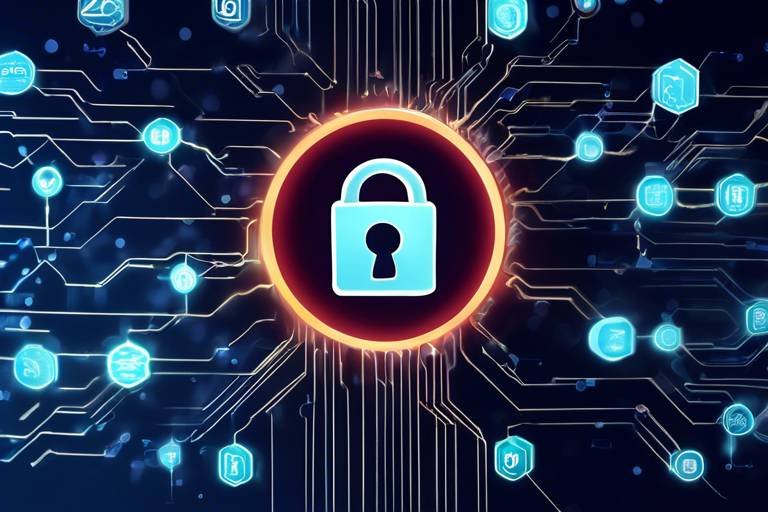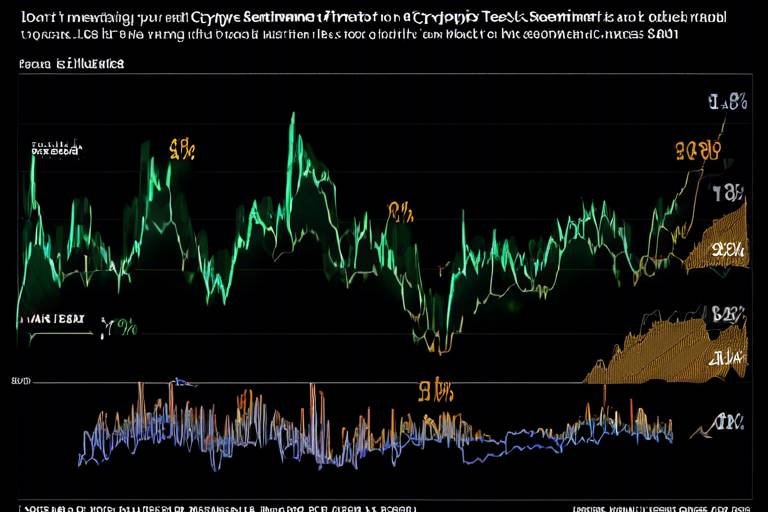The Role of Blockchain in IoT Security
The Internet of Things (IoT) is revolutionizing how we interact with the world around us, transforming everyday objects into connected devices that communicate and share data. However, this surge in connectivity comes with significant security challenges. With millions of devices linked together, the potential for vulnerabilities increases exponentially, making it imperative to find robust solutions to safeguard these systems. This is where blockchain technology steps in, offering a promising approach to enhance security in IoT environments.
At its core, blockchain is a decentralized ledger that records transactions across many computers in such a way that the registered transactions cannot be altered retroactively. This feature is crucial for IoT, where data integrity and security are paramount. By leveraging blockchain, we can create a more secure framework for IoT devices, ensuring that data remains authentic and protected from unauthorized access.
Imagine the IoT ecosystem as a vast city, bustling with traffic and activity. Each device is like a vehicle navigating through this city, and just as a city needs traffic lights and regulations to function smoothly, IoT devices require a secure infrastructure to operate safely. Blockchain acts as this regulatory mechanism, allowing devices to communicate securely without the risk of data breaches or manipulation.
Moreover, the decentralized nature of blockchain means that there is no single point of failure. This characteristic significantly reduces the risk of cyberattacks, as hackers would find it much more challenging to compromise a distributed network compared to a centralized system. In a world where data breaches are becoming more common, this aspect of blockchain is not just beneficial; it's essential.
In summary, the integration of blockchain technology into IoT security frameworks not only addresses existing vulnerabilities but also paves the way for a more resilient and trustworthy ecosystem. As we continue to explore the intricate relationship between blockchain and IoT, it becomes clear that this combination holds the key to a safer and more secure digital future.
- What is IoT? The Internet of Things (IoT) refers to the network of physical devices that are connected to the internet, allowing them to collect and exchange data.
- How does blockchain enhance IoT security? Blockchain enhances IoT security by providing a decentralized and tamper-proof ledger that ensures data integrity and protects against unauthorized access.
- What are smart contracts? Smart contracts are self-executing contracts with the terms of the agreement directly written into code, enabling automated and secure transactions in IoT systems.
- Can blockchain prevent all IoT security issues? While blockchain significantly improves IoT security, it cannot prevent all issues. It should be part of a broader security strategy.

Understanding IoT Vulnerabilities
The Internet of Things (IoT) is a rapidly expanding network of interconnected devices, from smart home appliances to industrial sensors. While this technological advancement brings incredible convenience and efficiency, it also opens the door to a plethora of security challenges. These challenges arise primarily due to the sheer number of devices and the diversity of platforms they operate on. Imagine a sprawling city where each building represents an IoT device. If one building is weakly constructed, it can jeopardize the entire city’s integrity. Similarly, vulnerabilities in IoT devices can lead to significant consequences.
One of the most pressing issues is data breaches. IoT devices often collect sensitive information, and when these devices are compromised, hackers can gain access to personal data, financial records, and even control over the devices themselves. For example, consider a smart thermostat that not only adjusts the temperature but also tracks your daily routines. If an attacker gains access, they could manipulate the device to create uncomfortable living conditions or gather insights about your lifestyle for malicious purposes.
Another major vulnerability is unauthorized access. Many IoT devices lack robust authentication mechanisms, making them easy targets for cybercriminals. Default passwords, which are often not changed by users, can be easily exploited. It’s like leaving your front door wide open with a sign that says, “Please come in!” This lack of security can lead to various attacks, including DDoS (Distributed Denial of Service), where compromised devices are used to overwhelm networks, causing outages and disruptions.
Moreover, the lack of standardization across IoT devices presents a significant challenge. Different manufacturers often implement their own protocols and security measures, leading to inconsistencies that attackers can exploit. This fragmented landscape makes it difficult for users to manage their devices securely. For instance, a smart camera from one brand may have excellent security features, while another from a different brand may be riddled with vulnerabilities. This inconsistency is akin to having a neighborhood where some houses are fortified while others are left unguarded.
Lastly, the issue of data integrity cannot be overlooked. IoT devices frequently transmit data to and from various endpoints. If this data is intercepted or altered during transmission, it can lead to erroneous actions and decisions. For example, if a smart health monitor sends inaccurate readings due to tampering, it could result in a misdiagnosis or improper treatment, posing serious risks to users’ health.
In summary, the vulnerabilities in IoT systems are numerous and diverse. Addressing these issues is crucial for ensuring the security and privacy of users. As we explore the role of blockchain in mitigating these vulnerabilities, it becomes clear that innovative solutions are necessary to protect the integrity of the IoT ecosystem.

Blockchain Fundamentals
To truly grasp the significance of blockchain in enhancing IoT security, it's crucial to first understand the foundational principles of blockchain technology. At its core, blockchain is a decentralized digital ledger that records transactions across multiple computers. This means that no single entity has control over the entire chain, which inherently boosts security and transparency. Imagine a library where every book is a transaction; instead of one librarian managing the entire collection, each reader has a copy of every book, ensuring that no one can alter the content without others noticing.
One of the standout features of blockchain is its cryptographic security. Each transaction is encrypted and linked to the previous one, forming a chain that is nearly impossible to tamper with. This encryption acts like a digital fingerprint, ensuring that any attempt to alter a transaction will be immediately evident to all users. This level of security is particularly vital in the IoT landscape, where devices often communicate sensitive information that could be exploited if intercepted.
Decentralization is a game-changer in the world of IoT security. By removing central points of failure, blockchain technology significantly mitigates the risks associated with traditional, centralized systems. Think of it like a spider web; if you cut one strand, the web remains intact, but if you cut the center of a traditional network, the entire structure could collapse. In a decentralized network, every node (or device) contributes to the overall security and functionality, making it much harder for malicious actors to target a single point and compromise the system.
Distributed networks enhance security and reliability in IoT applications through redundancy and fault tolerance. In a traditional system, a single server might handle all transactions, creating a bottleneck and a target for attacks. In contrast, a distributed approach spreads out the workload across numerous devices. This not only reduces the risk of a single point of failure but also improves performance. If one device goes down, others can pick up the slack, ensuring that the system continues to function smoothly.
Another critical aspect of blockchain technology is the use of consensus mechanisms. These are protocols that ensure all participants in the network agree on the validity of transactions before they are added to the blockchain. Various consensus algorithms exist, each with its own strengths and weaknesses. For instance, Proof of Work (PoW) requires participants to solve complex mathematical problems, while Proof of Stake (PoS) allows participants to validate transactions based on the number of coins they hold. These mechanisms are essential for securing IoT data transactions, as they prevent unauthorized access and ensure that only legitimate transactions are recorded.
In summary, understanding the fundamentals of blockchain technology is vital for appreciating its role in securing IoT systems. With its decentralized nature, cryptographic features, and robust consensus mechanisms, blockchain stands as a formidable guardian of data integrity and security in an increasingly connected world.
- What is blockchain? Blockchain is a decentralized digital ledger that records transactions across multiple computers, enhancing security and transparency.
- How does blockchain improve IoT security? By eliminating central points of failure and using cryptographic techniques, blockchain significantly reduces the risk of unauthorized access and data breaches in IoT systems.
- What are consensus mechanisms? Consensus mechanisms are protocols that ensure all participants in a blockchain network agree on the validity of transactions before they are added to the ledger.
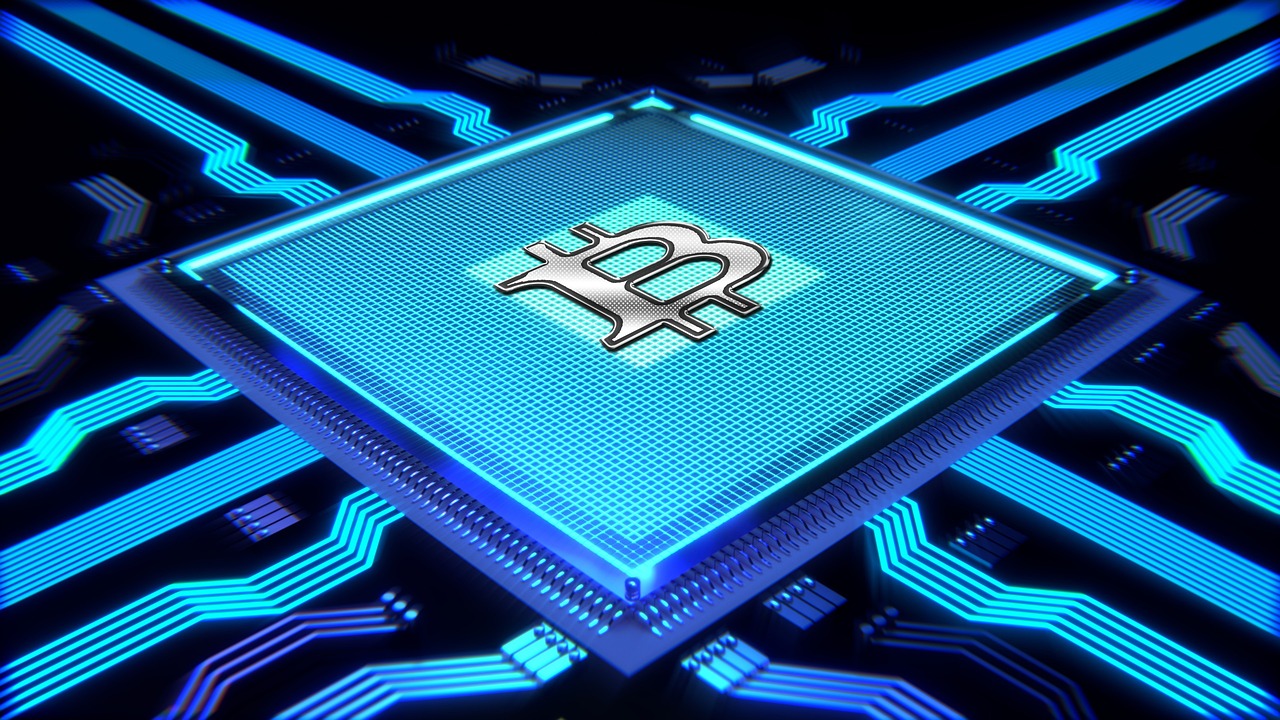
Decentralization Explained
Decentralization is like spreading out a delicious pizza instead of keeping it all in one spot. Imagine if a single person had control over the entire pizza; if they dropped it, everyone would go hungry! In the world of blockchain, decentralization means that no single entity has control over the entire network. Instead, the power is distributed among multiple participants, which significantly enhances security for Internet of Things (IoT) devices.
When we talk about IoT, we’re referring to a vast ecosystem of interconnected devices that communicate and share data with each other. These devices often operate in environments that are vulnerable to attacks, such as smart homes or industrial automation systems. By leveraging blockchain's decentralized nature, we can eliminate central points of failure that hackers often target. This means that even if one device is compromised, the entire network remains secure, much like how a fortress with multiple walls can withstand an attack from one side.
To further illustrate this point, let’s consider a few key advantages of decentralization in IoT security:
- Increased Resilience: With no single point of failure, decentralized networks can continue to function even if certain nodes are attacked or go offline.
- Enhanced Transparency: Every transaction is recorded on the blockchain, making it easy to trace back any unauthorized access or tampering.
- Trustless Environment: Users can interact with devices without needing to trust a central authority, as the blockchain provides a verifiable and immutable record of all transactions.
Decentralization not only protects IoT devices from external attacks but also enhances the overall trustworthiness of the system. Think of it as a community garden where everyone contributes and monitors the health of the plants. If one person notices a pest, they can alert the others, and together, they can take action. Similarly, in a decentralized IoT environment, devices can communicate and alert each other about potential threats, creating a more robust defense mechanism.
Moreover, the decentralized nature of blockchain allows for the implementation of various consensus mechanisms, which are essential for validating transactions. These mechanisms ensure that all participants agree on the state of the network, further solidifying its security. In essence, decentralization transforms IoT from a vulnerable collection of devices into a fortified network that is resilient, transparent, and trustworthy.

Benefits of Distributed Networks
When we talk about distributed networks in the context of IoT and blockchain, we're diving into a world where security and reliability take center stage. Think of a distributed network as a spider's web—each strand is interconnected, and if one strand breaks, the web still holds together. This is a significant advantage over traditional centralized systems, where a single point of failure can lead to catastrophic consequences. In the realm of IoT, where devices are constantly communicating and sharing data, the benefits of decentralization become even more pronounced.
One of the primary benefits of distributed networks is increased resilience. Since there is no central server that manages all the data, the risk of a complete system failure is drastically reduced. For instance, if a hacker were to target a centralized server, they could potentially access vast amounts of sensitive information in one fell swoop. However, in a distributed network, the data is spread across multiple nodes, making it significantly harder for malicious actors to compromise the entire system.
Moreover, distributed networks enhance data redundancy. This means that even if one node goes offline or is compromised, other nodes can still maintain the integrity and availability of the data. This redundancy is crucial for IoT applications, especially in critical sectors such as healthcare and transportation, where data loss can have severe implications. Imagine a smart health monitoring device that collects vital statistics; if the data from one device is lost, redundancy ensures that other devices can still provide accurate and timely information.
Another vital aspect of distributed networks is their ability to foster collaboration and innovation. By allowing multiple devices to communicate and share data without a central authority, developers can create more innovative solutions that leverage the unique capabilities of each device. This collaborative environment can lead to the development of new applications and services that enhance the overall user experience. For example, smart homes can integrate various devices—from thermostats to security cameras—creating a seamless ecosystem that learns and adapts to user preferences.
Finally, the use of distributed networks can significantly improve trust among users. In a world where data breaches are becoming alarmingly common, users are increasingly concerned about how their data is being handled. By utilizing blockchain technology within a distributed network, users can verify the authenticity of their data transactions without relying on a central authority. This transparency can lead to greater user confidence and willingness to adopt IoT solutions, knowing that their data is secure and their privacy is respected.
In summary, the benefits of distributed networks in the context of IoT and blockchain are manifold. From increased resilience and data redundancy to fostering innovation and enhancing user trust, these networks are paving the way for a more secure and efficient future in connected devices. As we continue to explore the intersection of these technologies, it's clear that distributed networks are not just a trend; they are a fundamental shift in how we think about security in the IoT landscape.
- What is a distributed network? A distributed network is a system where data and processing power are spread across multiple nodes rather than being centralized in one location. This enhances security and reliability.
- How does blockchain enhance IoT security? Blockchain provides a decentralized framework that protects data integrity and privacy, making it more difficult for unauthorized access and breaches to occur.
- What are the main benefits of using blockchain in IoT? The main benefits include improved data integrity, enhanced privacy, increased resilience against attacks, and fostering user trust.
- Can distributed networks prevent data breaches? While no system is entirely immune to breaches, distributed networks significantly reduce the risk by eliminating single points of failure.

Consensus Mechanisms
Consensus mechanisms are the backbone of blockchain technology, ensuring that all participants in the network agree on the validity of transactions. In the context of the Internet of Things (IoT), where numerous devices communicate and exchange data, these mechanisms are crucial for maintaining security and trust. Imagine a bustling marketplace where every vendor must confirm a sale before any money changes hands; this is akin to how consensus mechanisms operate within a blockchain network.
There are several types of consensus algorithms, each with its own strengths and weaknesses. The most common include:
- Proof of Work (PoW): Used by Bitcoin, this method requires participants to solve complex mathematical problems, making it resource-intensive but highly secure.
- Proof of Stake (PoS): Instead of relying on computational power, this method allows participants to validate transactions based on the number of coins they hold, making it more energy-efficient.
- Delegated Proof of Stake (DPoS): In this variant, stakeholders elect a small number of validators to confirm transactions, speeding up the process while maintaining security.
- Practical Byzantine Fault Tolerance (PBFT): This mechanism is designed for permissioned blockchains, ensuring that all nodes agree on the state of the network, even if some nodes fail or act maliciously.
Each of these consensus mechanisms has implications for how IoT devices can securely interact with one another. For instance, in a smart home environment, devices like thermostats and security cameras need to communicate seamlessly and securely. A consensus mechanism like PoS could allow these devices to verify each other's data without the heavy computational burden of PoW, thus enhancing efficiency and reducing latency.
Moreover, the choice of consensus mechanism can significantly impact the scalability of IoT applications. As the number of connected devices continues to grow, ensuring that the blockchain can handle increased transaction volumes without compromising security is vital. For example, a DPoS system might be more suitable for a large-scale IoT deployment, as it allows for quicker consensus and less energy consumption compared to PoW.
In summary, consensus mechanisms are essential for maintaining the integrity and security of blockchain networks, especially in the rapidly evolving IoT landscape. By selecting the appropriate consensus algorithm, developers can create robust applications that not only protect data but also enhance the overall user experience. Understanding these mechanisms is crucial for anyone looking to leverage blockchain technology in IoT solutions.
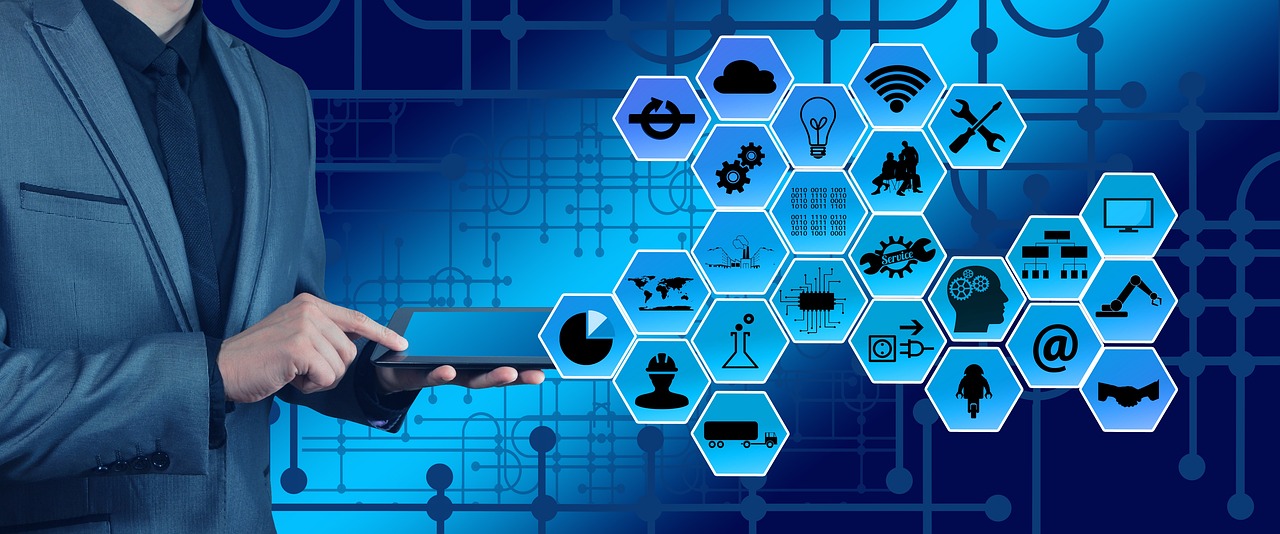
Enhancing Data Integrity
In the ever-evolving landscape of the Internet of Things (IoT), ensuring data integrity is paramount. Every device connected to the internet generates and transmits data, making it crucial to guarantee that this data remains unaltered and authentic throughout its lifecycle. Imagine a world where your smart thermostat reports incorrect temperatures due to tampering, or where your health monitor provides false readings. These scenarios highlight the potential chaos that could ensue if data integrity is compromised. Fortunately, blockchain technology emerges as a powerful ally in safeguarding the accuracy and authenticity of IoT data.
At its core, blockchain operates on a decentralized ledger system, which inherently enhances data integrity. Each transaction or data entry is recorded in a block and linked to the previous block, creating a secure chain of information. This structure not only makes it nearly impossible for anyone to alter past records without altering all subsequent blocks, but it also provides a transparent audit trail. To illustrate this, consider the following key features of blockchain that contribute to enhanced data integrity:
- Immutability: Once data is recorded on the blockchain, it cannot be changed or deleted. This immutability ensures that the original data remains intact, providing a reliable source of truth.
- Transparency: All participants in the blockchain network have access to the same data, which fosters a sense of trust. If any discrepancies arise, they can be easily identified and addressed.
- Cryptographic Security: Data on the blockchain is secured through cryptographic algorithms, making it exceedingly difficult for malicious actors to tamper with the information.
Moreover, blockchain's consensus mechanisms play a vital role in maintaining data integrity. Before any new data is added to the blockchain, it must be verified by multiple participants through a consensus process. This means that erroneous or fraudulent data cannot simply slip through the cracks, as it requires agreement from a majority of the network. By implementing various consensus algorithms, such as Proof of Work or Proof of Stake, blockchain ensures that only legitimate data is recorded.
For IoT applications, the implications of enhanced data integrity are profound. Consider a supply chain scenario where sensors track the temperature of perishable goods. If the data from these sensors is tampered with, it could lead to significant financial losses and health risks. However, by employing blockchain technology, stakeholders can be assured that the data remains accurate and trustworthy. This not only protects their investments but also enhances overall operational efficiency.
In summary, enhancing data integrity through blockchain technology is not just a technical improvement; it's a fundamental shift in how we approach data management in IoT systems. With its immutable records, transparent processes, and robust security measures, blockchain provides a solid foundation for ensuring that the data generated by connected devices remains authentic and reliable.
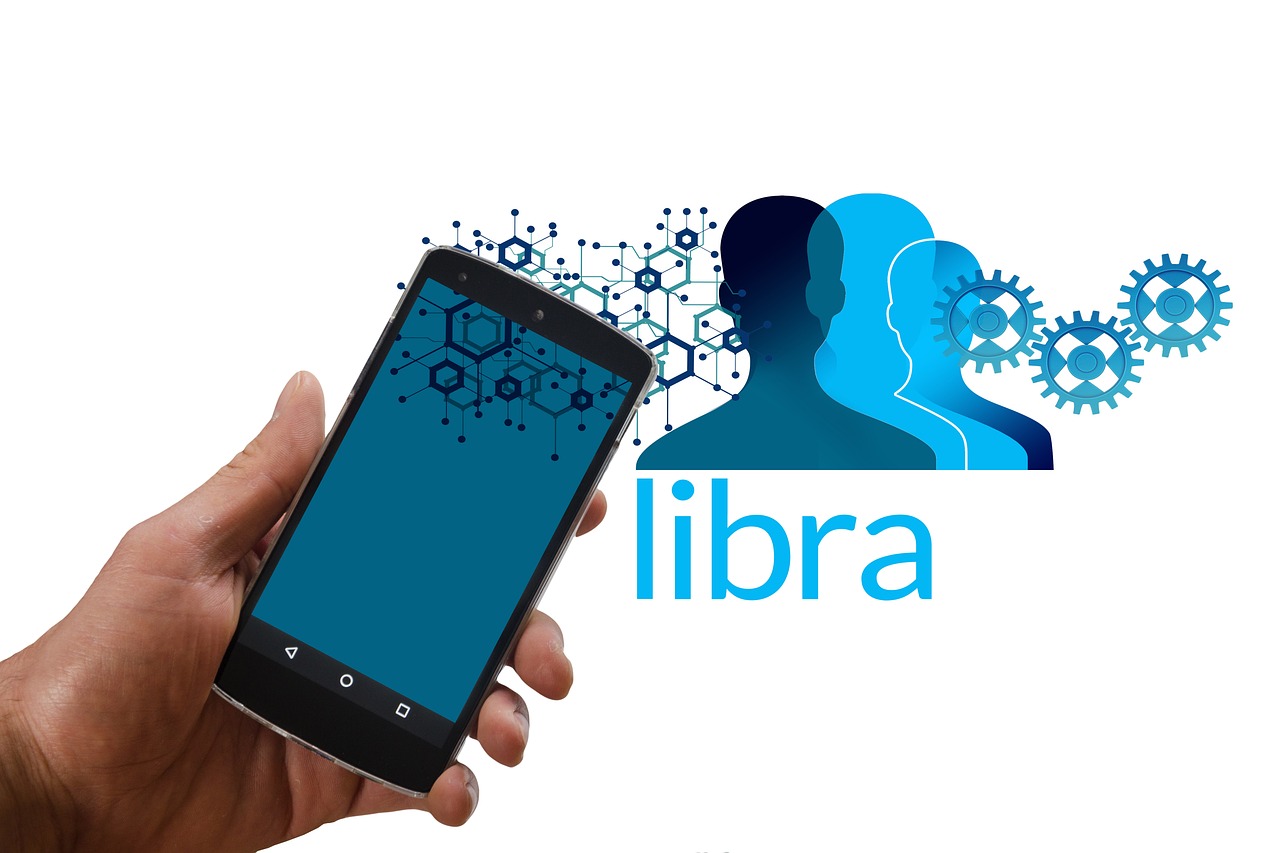
Privacy Concerns in IoT
The Internet of Things (IoT) has revolutionized the way we interact with technology, enabling devices to communicate seamlessly and providing us with unprecedented convenience. However, this interconnectedness comes with a significant price—privacy concerns. As our devices collect and share vast amounts of data, the risk of compromising personal information becomes alarmingly high. Imagine your smart thermostat not only adjusting the temperature but also tracking your daily habits and preferences. What happens to that data? Who has access to it? These questions highlight the critical need for robust privacy measures in IoT ecosystems.
One of the primary privacy concerns in IoT is the sheer volume of data generated by these devices. From smart home appliances to wearable fitness trackers, every interaction can be recorded and analyzed. This data often includes sensitive information, such as health metrics, location data, and even personal conversations. When this data is stored on centralized servers, it becomes a prime target for cybercriminals. Data breaches can expose this information, leading to identity theft, financial loss, and a general erosion of trust in IoT technologies.
Moreover, many IoT devices lack adequate security measures, making them vulnerable to unauthorized access. For instance, consider a smart security camera that streams live footage to the cloud. If the data transmission is not encrypted, hackers could intercept the feed and gain access to your private spaces. Such invasions not only compromise privacy but also raise ethical questions about surveillance and consent. Users often remain unaware of how their data is being used, leading to a sense of powerlessness over their own information.
To address these privacy concerns, blockchain technology emerges as a promising solution. By decentralizing data storage, blockchain can significantly enhance user privacy. Instead of relying on a single entity to manage data, blockchain distributes it across a network of nodes. This means that even if one node is compromised, the data remains secure and intact on other nodes. Additionally, blockchain's cryptographic features ensure that data is encrypted, making it nearly impossible for unauthorized parties to access sensitive information.
Furthermore, blockchain allows for greater transparency and user control over personal data. With smart contracts, users can dictate how their data is shared and with whom. For example, if a user wants to share health data with a doctor, they can create a smart contract that specifies the conditions under which that data can be accessed. This level of control empowers users and fosters trust in IoT applications.
In summary, while the IoT offers incredible benefits, it also raises significant privacy concerns that cannot be ignored. By leveraging blockchain technology, we can create a more secure and private environment for IoT users. As we continue to innovate and integrate new technologies, prioritizing privacy will be crucial in ensuring that the IoT remains a trusted and valuable part of our lives.
- What are the main privacy concerns associated with IoT devices?
The main concerns include data breaches, unauthorized access to personal information, and the lack of user control over data sharing.
- How does blockchain improve privacy in IoT?
Blockchain decentralizes data storage, enhances encryption, and allows users to control how their data is shared through smart contracts.
- Are all IoT devices vulnerable to privacy issues?
While not all devices are equally vulnerable, many lack adequate security measures, making them susceptible to data breaches and unauthorized access.
- What can users do to protect their privacy in IoT?
Users can take steps such as changing default passwords, regularly updating device software, and being mindful of the data they share with IoT applications.

Smart Contracts for Security
In the rapidly evolving landscape of the Internet of Things (IoT), ensuring security is paramount. One of the most innovative solutions to enhance this security is through the use of smart contracts. These self-executing contracts, with the terms of the agreement directly written into code, offer a way to automate and enforce rules without the need for intermediaries. Imagine a world where your devices can communicate and transact with each other securely, all while minimizing human intervention. Sounds intriguing, right?
Smart contracts operate on the blockchain, which means they inherit all the benefits of this technology, including transparency, immutability, and security. By utilizing smart contracts, IoT systems can ensure that data transactions are not only secure but also efficient. This efficiency comes from the ability of smart contracts to execute automatically once predefined conditions are met. For example, in a smart home setup, a smart contract could automatically adjust the thermostat when it detects that no one is home, ensuring energy efficiency without compromising security.
Furthermore, these contracts can significantly reduce the risk of fraud. Since smart contracts are executed on a decentralized platform, the chances of tampering or unauthorized changes are drastically diminished. This is particularly crucial in environments where sensitive data is transmitted, as it helps maintain the integrity and confidentiality of the information. For instance, in a healthcare IoT application, patient data can be securely shared among devices and authorized personnel, ensuring that only the right people have access to sensitive information.
To illustrate the impact of smart contracts on IoT security, consider the following table that outlines their key benefits:
| Benefit | Description |
|---|---|
| Automation | Reduces the need for manual intervention, lowering the risk of human error. |
| Security | Data transactions are secured through cryptographic techniques, making them resistant to tampering. |
| Transparency | All transactions are recorded on the blockchain, providing a clear audit trail. |
| Cost Efficiency | Eliminates intermediaries, reducing transaction costs and speeding up processes. |
As IoT devices become more prevalent, the need for robust security measures cannot be overstated. Smart contracts provide a promising solution by not only enhancing security but also streamlining operations. The future of IoT lies in the seamless integration of smart contracts, ensuring that devices can operate safely and efficiently in an interconnected world.
Q: What exactly are smart contracts?
A: Smart contracts are self-executing contracts with the terms of the agreement directly written into code, allowing for automated transactions on the blockchain.
Q: How do smart contracts enhance IoT security?
A: They enhance security by automating processes, reducing human intervention, and ensuring that all transactions are securely recorded on the blockchain, minimizing the risk of fraud.
Q: Are smart contracts expensive to implement?
A: While there may be initial costs associated with developing and deploying smart contracts, they often lead to long-term savings by reducing transaction costs and improving efficiency.
Q: Can smart contracts be modified once deployed?
A: No, smart contracts are immutable. Once they are deployed on the blockchain, their code cannot be changed, ensuring the integrity of the agreement.

Case Studies of Blockchain in IoT
When it comes to the intersection of blockchain technology and the Internet of Things (IoT), real-world applications provide compelling evidence of the benefits that this combination can offer. Several innovative companies are already leveraging blockchain to enhance security, improve data integrity, and streamline operations in their IoT ecosystems. Let's delve into some noteworthy case studies that highlight the transformative potential of blockchain in IoT.
One prominent example is IBM's Food Trust platform, which utilizes blockchain to enhance transparency and traceability in the food supply chain. By integrating IoT devices such as sensors and RFID tags with blockchain, stakeholders can track the journey of food products from farm to table. This not only helps in ensuring food safety by quickly identifying contamination sources but also builds consumer trust through verified data. When a food safety incident occurs, the ability to trace the product back through the supply chain in real-time can be a game changer.
Another fascinating case is VeChain, a blockchain platform designed specifically for supply chain management. VeChain uses IoT devices to collect data on products, which is then recorded on the blockchain. This ensures that the data remains tamper-proof and accessible to all authorized parties. For instance, luxury goods manufacturers can authenticate their products using IoT-enabled tags that relay information to the blockchain, preventing counterfeiting and protecting brand integrity. The seamless integration of IoT and blockchain not only enhances security but also optimizes inventory management and reduces losses.
In the realm of smart cities, Smart Dubai is an initiative that aims to transform Dubai into a fully smart city by leveraging blockchain and IoT technologies. The city uses blockchain to secure data from various IoT devices, such as traffic sensors and energy meters. This integration allows for real-time monitoring and analysis, leading to improved urban planning and resource management. Imagine a city where traffic flows smoothly because data from vehicles and traffic lights are securely shared and analyzed in real-time—this is the future Smart Dubai is striving for.
A critical component of these case studies is the role of smart contracts. These self-executing contracts with the terms of the agreement directly written into code can automate various processes. For instance, in the case of VeChain, smart contracts can automatically trigger actions like payments or notifications based on the data collected from IoT devices. This not only reduces the need for human intervention but also minimizes the risk of errors and fraud, thus enhancing overall security.
To illustrate the effectiveness of these implementations, consider the following table summarizing key aspects of each case study:
| Case Study | Industry | Blockchain Role | Benefits |
|---|---|---|---|
| IBM Food Trust | Food Supply Chain | Transparency and traceability | Enhanced food safety, consumer trust |
| VeChain | Supply Chain Management | Data integrity and authentication | Counterfeit prevention, optimized inventory |
| Smart Dubai | Urban Development | Data security and real-time analysis | Improved resource management, efficient traffic flow |
These case studies showcase the diverse applications of blockchain in enhancing IoT security and functionality. By addressing vulnerabilities and ensuring data integrity, blockchain not only protects connected devices but also fosters trust among users and stakeholders. The integration of these technologies is paving the way for a more secure and efficient future in various industries.
Q1: How does blockchain improve IoT security?
Blockchain enhances IoT security by providing a decentralized framework that eliminates single points of failure, ensuring data integrity, and enabling secure transactions through cryptographic methods.
Q2: Can blockchain prevent data breaches in IoT devices?
While blockchain cannot completely eliminate the risk of data breaches, it significantly reduces the chances by securing data and providing transparent access controls, making it harder for unauthorized users to manipulate information.
Q3: What are smart contracts, and how do they relate to IoT?
Smart contracts are self-executing contracts with the terms directly written into code. In IoT, they automate processes and enforce agreements without the need for intermediaries, enhancing security and efficiency.
Q4: Are there any limitations to using blockchain in IoT?
Yes, some limitations include scalability issues, the complexity of integration with existing systems, and the need for significant computational resources, which can be challenging for low-power IoT devices.
Frequently Asked Questions
- What are the main vulnerabilities of IoT devices?
IoT devices are prone to various vulnerabilities such as data breaches, unauthorized access, and insecure communication channels. These weaknesses can lead to significant consequences, including data loss, privacy violations, and unauthorized control of devices.
- How does blockchain enhance IoT security?
Blockchain enhances IoT security by providing a decentralized platform that eliminates single points of failure. This means that even if one node is compromised, the entire system remains secure. Additionally, blockchain's cryptographic features ensure data integrity and authenticity, making it difficult for malicious actors to tamper with data.
- What is decentralization in blockchain?
Decentralization in blockchain refers to the distribution of data across multiple nodes rather than relying on a central authority. This characteristic significantly enhances security by reducing the risk of attacks that target central points of failure, thereby improving the resilience of IoT systems.
- What are consensus mechanisms?
Consensus mechanisms are protocols used in blockchain to validate transactions and maintain the integrity of the network. They ensure that all participants agree on the state of the blockchain, which is crucial for securing IoT data transactions and preventing fraudulent activities.
- How does blockchain ensure data integrity?
Blockchain ensures data integrity by creating a tamper-proof ledger where each transaction is recorded in a secure and immutable manner. Once data is added to the blockchain, it cannot be altered or deleted, which guarantees that the information remains authentic throughout its lifecycle.
- What privacy concerns exist in IoT environments?
Privacy concerns in IoT environments primarily revolve around the collection and sharing of personal data without user consent. Additionally, many IoT devices lack adequate security measures, making them vulnerable to data breaches that can expose sensitive information.
- How can blockchain enhance user privacy in IoT?
Blockchain can enhance user privacy by enabling secure and anonymous data transactions. By using cryptographic techniques, users can maintain control over their data and share it selectively, ensuring that their personal information remains protected from unauthorized access.
- What are smart contracts, and how do they improve security?
Smart contracts are self-executing contracts with the terms of the agreement directly written into code. They automate processes and enforce agreements without human intervention, reducing the risk of fraud and errors, thereby enhancing security in IoT systems.
- Can you provide examples of blockchain applications in IoT?
Yes! There are several real-world applications of blockchain in IoT, including supply chain management, secure device communication, and energy trading platforms. These case studies demonstrate the effectiveness of blockchain technology in improving security and trust in connected devices.

